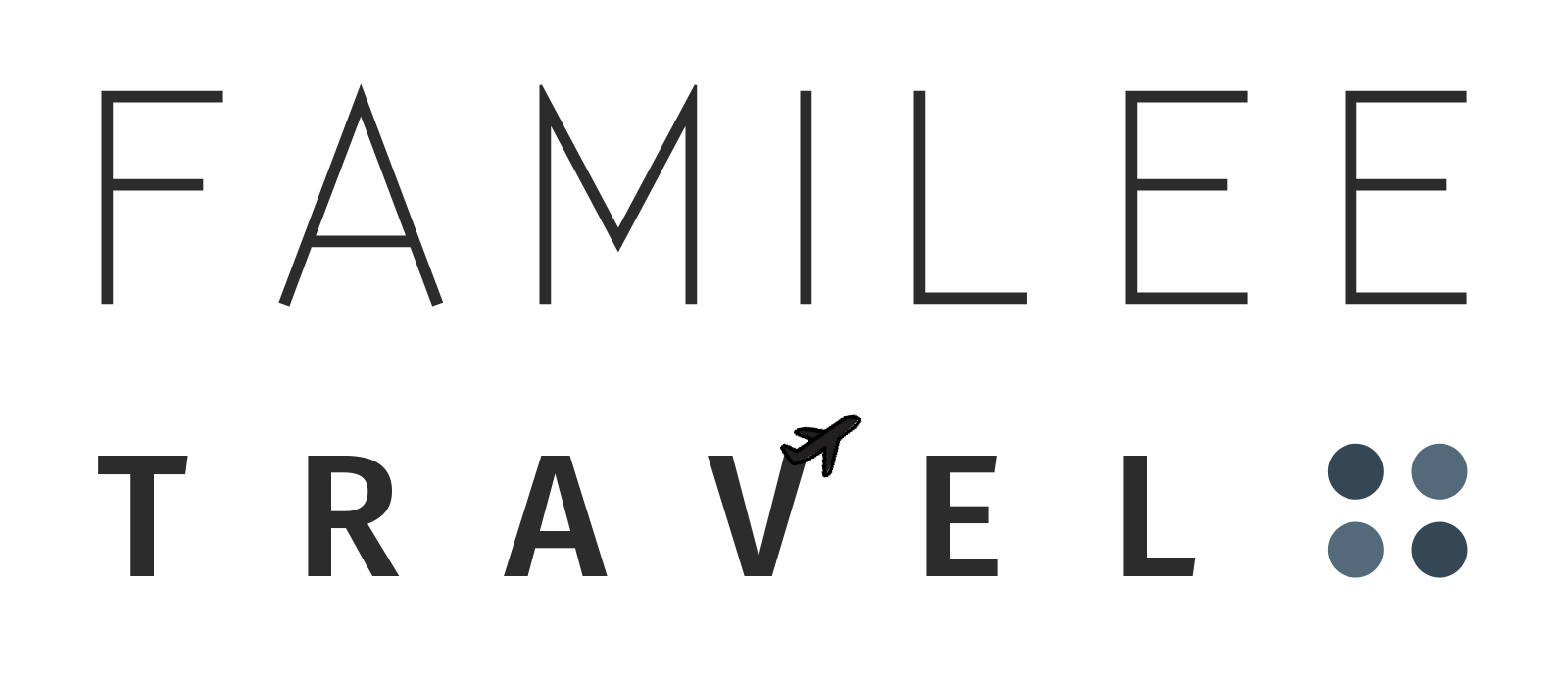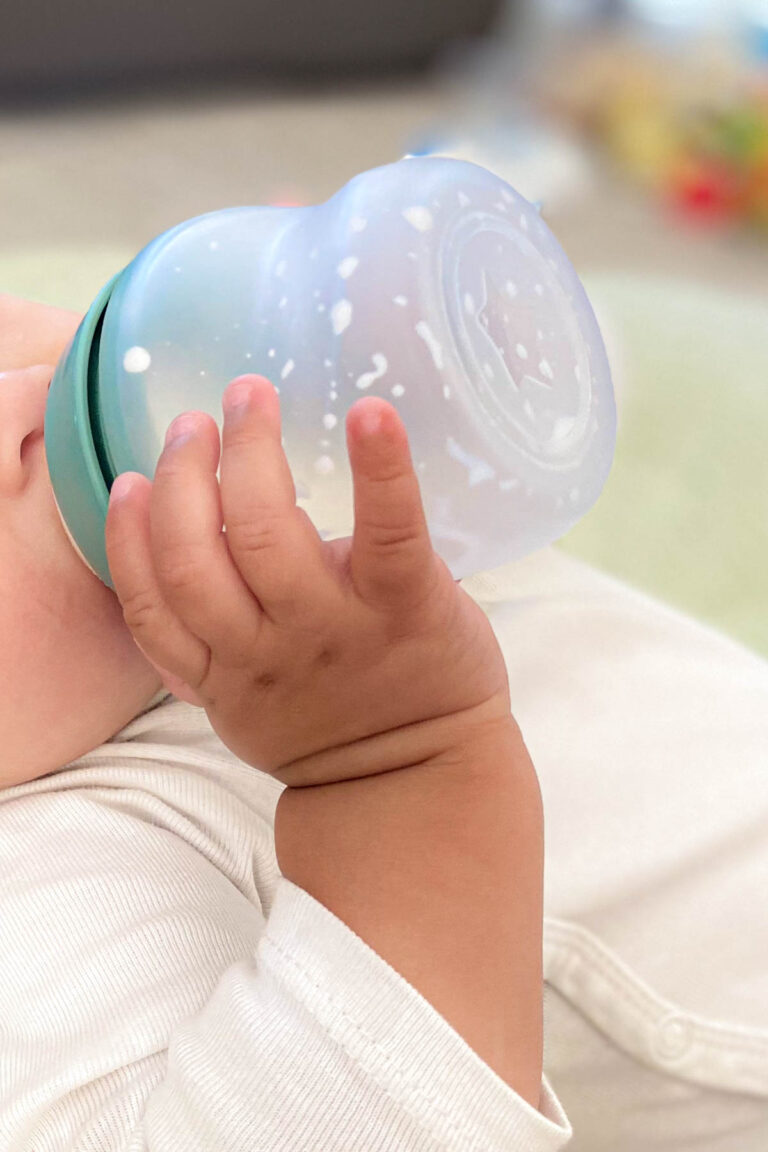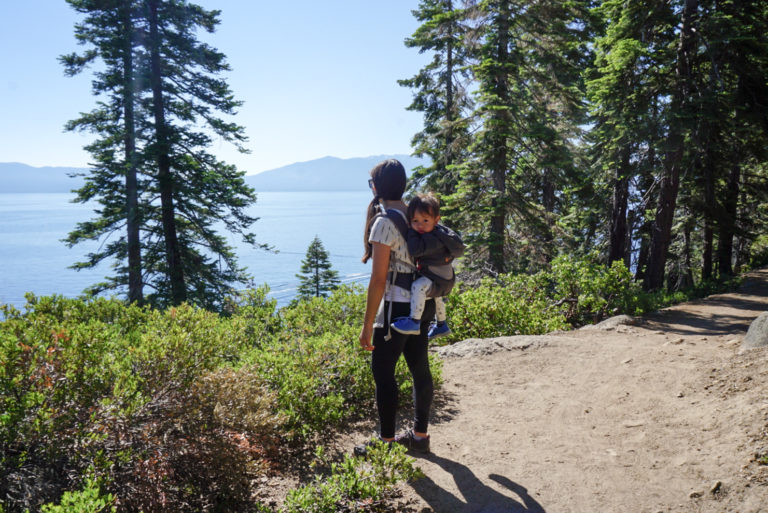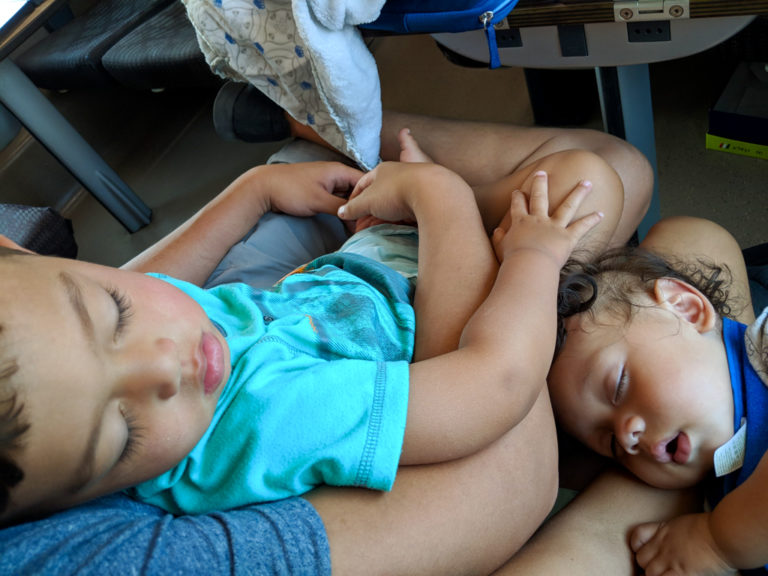Pumping when flying
Standing at the back of the plane, looking out that tiny little window, I relaxed as the familiar whir of my breast pump started up. I was not in the bathroom, nor in the back row seats. I was literally at the back of the plane, facing the rear exit door hooked up to my milking machine.
Let’s back up a bit.
This article contains affiliate links. If you chose to purchase something, it will not cost you anything extra by using our link. We receive a very small commission which helps us maintain this site. For further details, you can read our disclaimer policy.
I had to travel to the east coast for a friend’s shower, and that would be my first time traveling away from both babies. I knew I’d have to pump while there, but it wasn’t until a couple of days before I left that it dawned on me I would be flying all day and therefore need to pump en route.
Pumping is not the easiest or most enjoyable thing to do, and adding another layer of difficulty doesn’t help. But sometimes you have to do what you have to do.
Here are some things I learned, I hope it can help you prepare if you need to pump when flying.

Tips for nursing moms for pumping when flying
- Pack all your pumping equipment and accessories in your carry on bag. I like to put all my accessories (tubes, flanges, etc.) in a ziplock bag. You can pack them in your checked luggage (TSA allows both), but only do this if you absolutely will not need it while en route. There’s a greater risk of damage or loss if you check it rather than handle yourself by carrying it on.
- While waiting to board my first flight, for my first weekend away from my baby, I heard an announcement from my flight stating anyone in the later boarding groups would have to check their carry-on suitcase. My stomach dropped. I had a suitcase, but half of it was my pump, accessories, and bottles. I needed to pump on my layover so I couldn’t check the bag as then it would’ve gone all the way to my destination. I approached the desk explaining my situation, and the attendant, unfortunately, said he couldn’t do anything about it but I could wait and ask the boarding attendant. That person wasn’t helpful either, but basically said I could bring it on and good luck. Thankfully once I boarded it fit, no problem, but I was near tears from the situation. The attendants did not seem to care or want to help. It happened to me on another flight as well, a very similar situation. After that, I learned. The next time they tried to get me to check my bag, I told them I had medical equipment in there that I would need on the plane/layover. Right away they were more understanding and accommodating.
- The FDA counts a breast pump as medical equipment, so don’t be afraid to call it this to get people to take you more seriously.
- While waiting to board my first flight, for my first weekend away from my baby, I heard an announcement from my flight stating anyone in the later boarding groups would have to check their carry-on suitcase. My stomach dropped. I had a suitcase, but half of it was my pump, accessories, and bottles. I needed to pump on my layover so I couldn’t check the bag as then it would’ve gone all the way to my destination. I approached the desk explaining my situation, and the attendant, unfortunately, said he couldn’t do anything about it but I could wait and ask the boarding attendant. That person wasn’t helpful either, but basically said I could bring it on and good luck. Thankfully once I boarded it fit, no problem, but I was near tears from the situation. The attendants did not seem to care or want to help. It happened to me on another flight as well, a very similar situation. After that, I learned. The next time they tried to get me to check my bag, I told them I had medical equipment in there that I would need on the plane/layover. Right away they were more understanding and accommodating.
- Bring pump cleaning wipes to be able to wash your pump parts on the go.


- Think about how long your travel day is, not only your flight. You might spend a lot of time getting to/from the airport, checking in, through security and any delays. Plan out your pumping times as you may be restricted by time or place.
- Look on a map or ask if the airport has a nursing/pumping room. Medium to large airports should have designated nursing rooms. These aren’t supposed to be for changing babies or anything else, only for moms nursing their babies or pumping. They vary but most have some sort of chair or bench, at least one outlet, and a sink.
- Some airports now have Mamava pods which are standalone pods for breastfeeding and pumping privacy. I had to download their app to unlock the pod. It didn’t have a sink, so I had to carry the milk to the regular bathroom to dump and clean out which was a little annoying, but it was still better than pumping in the bathroom.

- Dress comfortably in something you will be able to nurse easily in.
- Bring a nursing cover, blanket, or scarf to give you some privacy if you want to pump in your seat directly.
- I pumped in my seat on one flight as it was comfier and I didn’t want to stay in the bathroom for 15+ minutes. It was a bit awkward getting set up and situated, but once I did it went smoothly. No one could see anything, and the plane’s noises masked the sound of my pump.
- Make sure you have access to an outlet if your pump needs to be plugged in. Or find a portable battery/charger pack (see recommendation further below).
- Decide if you’re going to keep, donate or toss your milk while traveling.
- If you’re keeping the expressed milk, bring a cooler and gallon-size ziplock bags to hold ice to keep the milk cold. You can ask any coffee/food service place and the flight attendants for ice. Ice packs work too, but you’ll need access to a freezer both ways and need to make sure they don’t defrost all the way.
- If you’re not bringing the milk home, consider donating it locally. You can probably find someone in need on the local Eats on Feets facebook page wherever you are traveling. Eats on Feets is a peer-to-peer milk sharing organization, so it’s easier to donate quickly on the go compared with a milk bank.
- I brought my milk back home with me most times, but one time I tossed it. It was so painful to do! That milk is hard work, but I was traveling in Colombia and the thought of keeping everything clean enough and cold enough throughout the trip and the long travel day back seemed more stressful than it was worth.
- For additional tips on bringing liquids (including breast milk) through security for baby while traveling, read my related blog post “Bring the bottle through security for baby.”
Now back to how I ended up pumping in the back of the plane. I have the Spectra S2 breast pump, which has been great, but it must be plugged in to operate. As I mentioned, I wasn’t thinking about pumping while flying, only pumping at my destination. So I wasn’t thinking of the logistics and limitations of my plug-in only breast pump.
I was traveling from the east coast back to the west coast without my baby. I pumped before going to the airport and had planned to again at my layover, but the first flight got a bit delayed and the connection was too tight. I had to hop right on my second plane. At that point, I was going to need to pump within an hour or so and I still had a 4-hour flight ahead of me, so it had to happen on the plane.
Right after I boarded I asked the flight attendant for an outlet, and he informed me there was only one at the back of the plane. They told me I could use it after they rolled the carts out to start the drink service. I got everything ready and huddled back there and set up once they were up the aisle. Despite the less than ideal circumstances, I was breathing a sigh of relief because I couldn’t wait much longer.
It worked out fine, but I didn’t care to repeat that situation. When I got home I researched a portable power solution for my pump. There’s the Spectra S1, same as Spectra S2 but it’s rechargeable. However, I wasn’t going to buy a brand new pump at this point. I found another solution that works. I bought the Medela Pump in Style Battery Pack, Portable Unit. It works with the Medela Pump in Style, and Spectra S2, and potentially other pumps as well. You need 8 AA batteries for it to work. They recommend rechargeable batteries as it takes a lot of juice to power a breast pump and will drain through batteries very quickly. I bought the Energizer Rechargeable AA and AAA Battery Charger, and another set of 4 Energizer Rechargeable AA Batteries. On my subsequent trips sans baby, pumping while flying was at least a bit less stressful not having to worry about needing an outlet.
Related Reading
- Bringing liquids through security for baby
- Preparing for your baby’s first flight
- 5 reasons why we travel with our baby
Pin it for later
Don’t forget to pin this for future reference, and share it with any friends!







